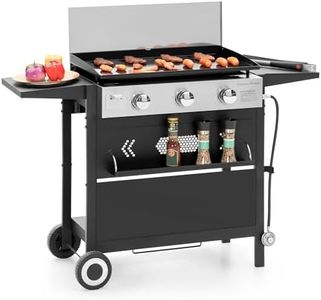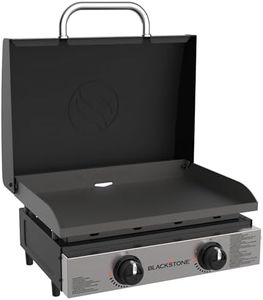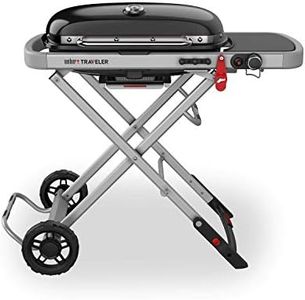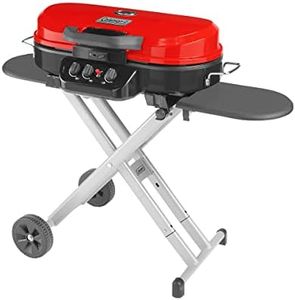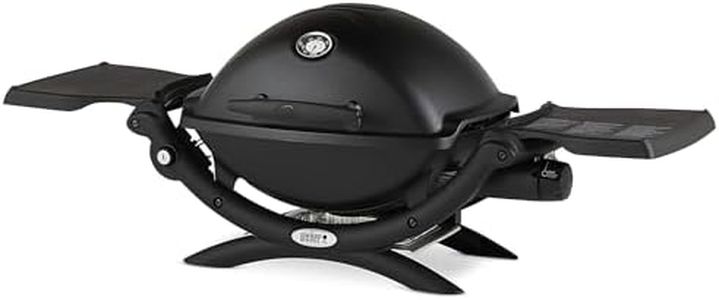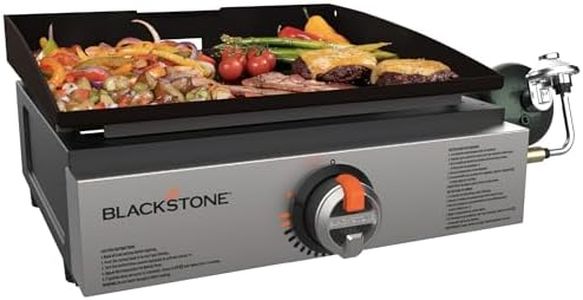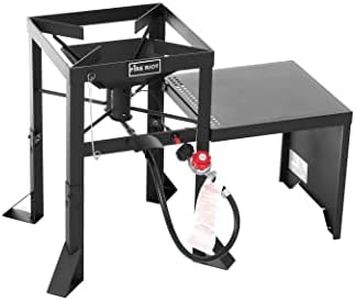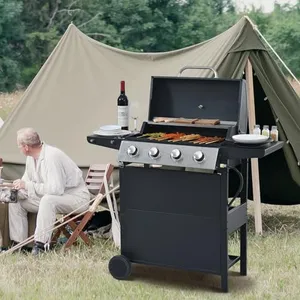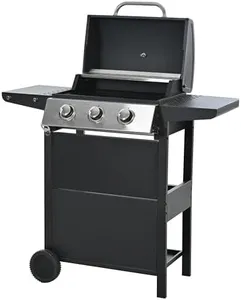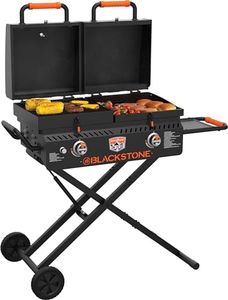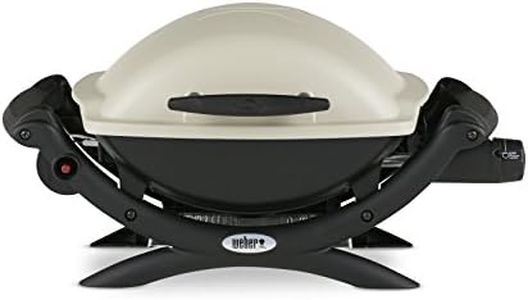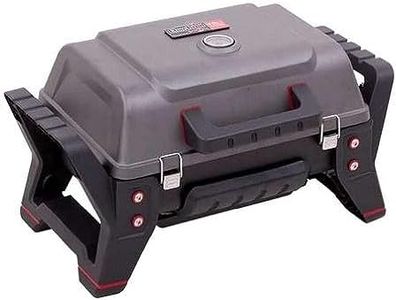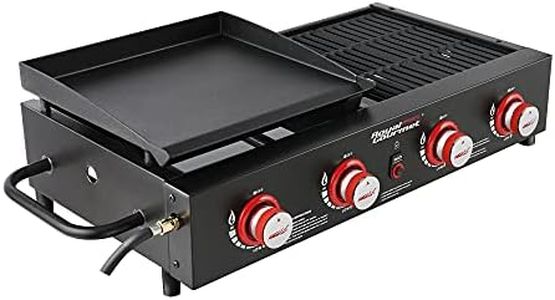10 Best Portable Gas Grills 2025 in the United States
Our technology thoroughly searches through the online shopping world, reviewing hundreds of sites. We then process and analyze this information, updating in real-time to bring you the latest top-rated products. This way, you always get the best and most current options available.

Our Top Picks
Winner
Blackstone 1813 Original 22” Tabletop Griddle with Hood and Stainless Steel Front Plate, Powder Coated Steel, Black
Most important from
11552 reviews
The Blackstone 1813 Original 22” Tabletop Griddle is a solid choice for those seeking a portable gas grill with ample cooking space. With a 22-inch cooking surface offering 361 square inches, it can accommodate a significant amount of food, making it ideal for family gatherings or small parties.
The griddle's cooking surface can fit up to 12 burgers or 9 steaks at a time. The build quality is notable, featuring a stainless steel front plate and a powder-coated steel body, ensuring durability and resistance to the elements.
Weighing 37.5 pounds, it is relatively portable, although some users might find it a bit heavy to transport frequently.
Most important from
11552 reviews
Weber Traveler Portable Gas Grill, Black
Most important from
1355 reviews
The Weber Traveler Portable Gas Grill is a compelling option for those seeking a reliable and convenient outdoor grilling experience. Its primary strength lies in its portability and ease of use. The one-handed setup and collapse feature, along with the grill being attached to the cart, make it quick and easy to set up or store. This is particularly beneficial for users who prioritize convenience and have limited storage space, as the grill can fit comfortably in a car trunk or a small garage space.
It also offers a large cooking area of 320 square inches, which can accommodate up to 15 burgers at once, making it suitable for small to medium-sized gatherings. The grill is designed to optimize gas usage, and it supports both 16 oz. gas canisters and larger tanks with an adapter hose, offering flexibility in fuel options. Constructed with porcelain-coated cast iron and an aluminum frame, it promises durability and efficient heat retention.
However, there are a few drawbacks to consider. The grill weighs 49 pounds, which might be a bit heavy for some users looking for ultra-light portability. Additionally, with a single burner, it may have limitations in cooking performance compared to grills with multiple burners. The assembly requirement might also be a minor inconvenience for some users.
Most important from
1355 reviews
Coleman RoadTrip 285 Portable Stand-Up Propane Grill with 3 Adjustable Burners & Instastart Ignition, 20,000 BTUs of Power for Outdoor Cooking
Most important from
6661 reviews
The Coleman Roadtrip 285 Portable Stand-Up Propane Grill is a versatile gas grill that offers a significant level of portability and performance. With a grilling power of up to 20,000 BTUs and three adjustable burners, it provides precise temperature control, making it suitable for a variety of cooking styles and foods. The large grilling area of 285 square inches is spacious enough to cook multiple items at once, which is ideal for anyone who enjoys outdoor cooking, whether in their backyard, at the beach, camping, or at sports events and tailgating.
The grill is designed for ease of use with quick-fold legs and two wheels, allowing for hassle-free setup and takedown. The integrated thermometer ensures accurate temperature monitoring, which is a valuable feature for maintaining consistent cooking results. The grill's build quality is solid, with cast iron materials that offer durability, although it does require assembly. One downside is that it uses 1-pound propane cylinders, which are sold separately and might need frequent replacements for extended use. Additionally, while the grill is portable, it is relatively heavy at 46.67 pounds, which might be cumbersome for some users to transport.
The Coleman Roadtrip 285 comes with a grease tray and side tables, adding to its convenience. A 3-year warranty provides added peace of mind. This grill is well-suited for outdoor enthusiasts looking for a reliable and portable grilling solution with a good balance of cooking power and convenience.
Most important from
6661 reviews
Buying Guide for the Best Portable Gas Grills
Choosing the right portable gas grill can make your outdoor cooking experience enjoyable and hassle-free. When selecting a portable gas grill, it's important to consider various factors that will affect its performance, convenience, and suitability for your needs. Here are some key specifications to look at and how to determine which ones are right for you.FAQ
Most Popular Categories Right Now
